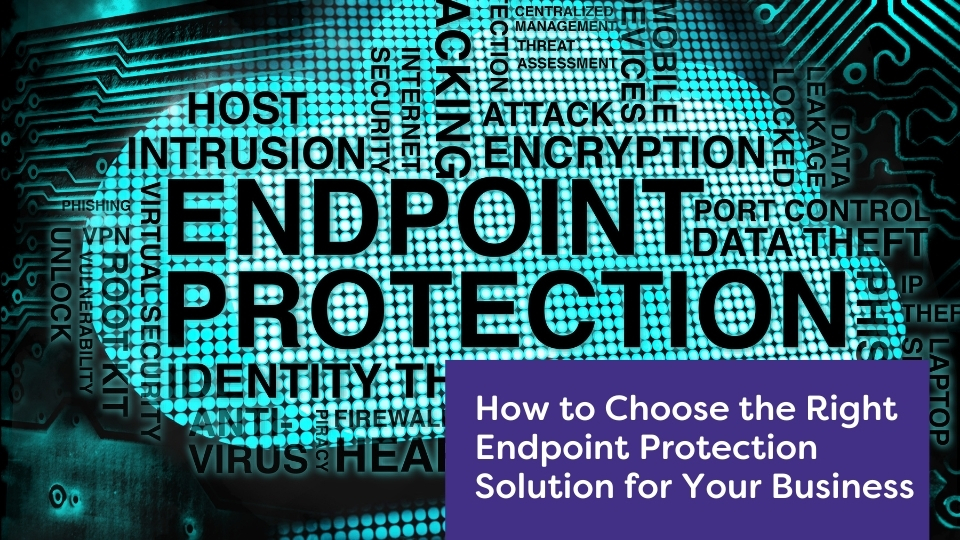With cyber threats evolving rapidly, businesses must take proactive measures to safeguard their digital assets. Endpoint protection solutions are essential for securing devices such as desktops, laptops, mobile devices, and servers from cyberattacks.
However, with numerous options available, choosing the right solution can be overwhelming. This guide will walk you through the key factors to consider when selecting an endpoint protection solution that best fits your business needs.
Understanding Endpoint Protection
Endpoint protection is a security approach designed to protect endpoints – the devices employees use to access a business network. A strong endpoint security solution helps prevent malware, ransomware, phishing attacks, and unauthorized access.
Why Endpoint Security Matters
- Prevents data breaches and financial losses.
- Protects remote and on-premise employees.
- Ensures compliance with industry regulations.
- Reduces downtime caused by cyberattacks.
Related: 5 Common Cybersecurity Mistakes
Key Features to Look for in an Endpoint Protection Solution
When evaluating endpoint security software, consider the following essential features:
A. Advanced Threat Detection & Prevention
- Uses AI and machine learning to identify and stop threats in real time.
- Blocks malware, ransomware, and zero-day attacks before they execute.
- Provides behavioral analysis to detect suspicious activity.
B. Endpoint Detection and Response (EDR)
- Monitors and analyzes endpoint activity for advanced threats.
- Helps detect, investigate, and mitigate security incidents.
- Provides forensic capabilities to understand attack origins.
C. Cloud-Based vs. On-Premise Deployment
- Cloud-based solutions offer real-time updates, scalability, and remote management.
- On-premise solutions provide more control over security configurations but require IT maintenance.
D. Firewall and Intrusion Prevention System (IPS)
- Blocks unauthorized access to sensitive business data.
- Detects and prevents network-based threats.
E. Data Encryption and Device Control
- Protects sensitive data from unauthorized access and leaks.
- Restricts the use of external storage devices like USBs to prevent data theft.
F. Automated Threat Response & Remediation
- Reduces manual intervention by automatically isolating infected devices.
- Rolls back changes caused by ransomware and malware attacks.
Related: Ransomware Attacks: How to Prevent, Respond, and Recover
Evaluating Your Business Needs
Choosing the right endpoint security solution depends on factors such as:
A. Business Size & Industry
- Small businesses may need basic endpoint protection with antivirus and firewall.
- Large enterprises require advanced features like AI-driven threat detection and EDR.
- Regulated industries (finance, healthcare) must meet compliance requirements (HIPAA, GDPR, PCI-DSS).
B. Number of Endpoints to Protect
- Consider the number of devices your employees use.
- Include remote workers and bring-your-own-device (BYOD) policies.
C. Integration with Existing Security Systems
- Ensure the solution works seamlessly with SIEM (Security Information and Event Management) tools.
- Check compatibility with cloud services (Microsoft 365, Google Workspace, AWS, etc.).
Comparing Top Endpoint Protection Solutions
Here are some leading endpoint protection platforms to consider:
| Solution | Key Features | Best For |
| Microsoft Defender for Endpoint | AI-driven threat detection, integration with Windows security | Businesses using Microsoft products |
| CrowdStrike Falcon | Cloud-native EDR, behavioral AI threat detection | Large enterprises & financial institutions |
| Symantec Endpoint Security | Multi-layered protection, IPS, encryption | Compliance-heavy industries |
| McAfee Endpoint Security | Centralized management, threat intelligence | Businesses with hybrid IT environments |
| Bitdefender GravityZone | AI-powered malware protection, ransomware defense | Small to mid-sized businesses |
Budget Considerations
A. Licensing Models
- Subscription-based (SaaS) – Pay monthly or annually for cloud-based services.
- Perpetual licensing – One-time purchase with ongoing maintenance fees.
B. Total Cost of Ownership (TCO)
- Consider costs for software, deployment, training, and IT management.
- Factor in potential financial losses from cyberattacks.
Testing and Deployment Strategy
A. Free Trials and Pilot Testing
- Most endpoint security vendors offer free trials—test solutions in your business environment before committing.
B. Implementation & Employee Training
- Choose a solution that offers easy deployment and minimal disruption.
- Train employees on cybersecurity best practices to complement endpoint security measures.
Conclusion
Selecting the right endpoint protection solution is critical for securing your business from cyber threats. By assessing key features, evaluating business needs, and comparing available solutions, you can make an informed decision that enhances security, reduces risk, and ensures long-term business continuity.
FAQs
1. What is the difference between antivirus and endpoint protection?
Antivirus protects against known malware, while endpoint protection includes advanced security features like AI threat detection, firewalls, and EDR.
2. How can small businesses afford endpoint protection?
Many security providers offer affordable cloud-based plans tailored for small businesses.
3. Do I need endpoint protection for remote employees?
Yes, remote workers are prime targets for cyberattacks, making cloud-based endpoint security a must.
4. How often should I update my endpoint protection software?
Enable automatic updates to ensure protection against emerging threats.
5. Can endpoint security solutions prevent ransomware attacks?
Yes, advanced solutions offer ransomware rollback, AI-based detection, and behavioral monitoring to stop ransomware before it spreads.


